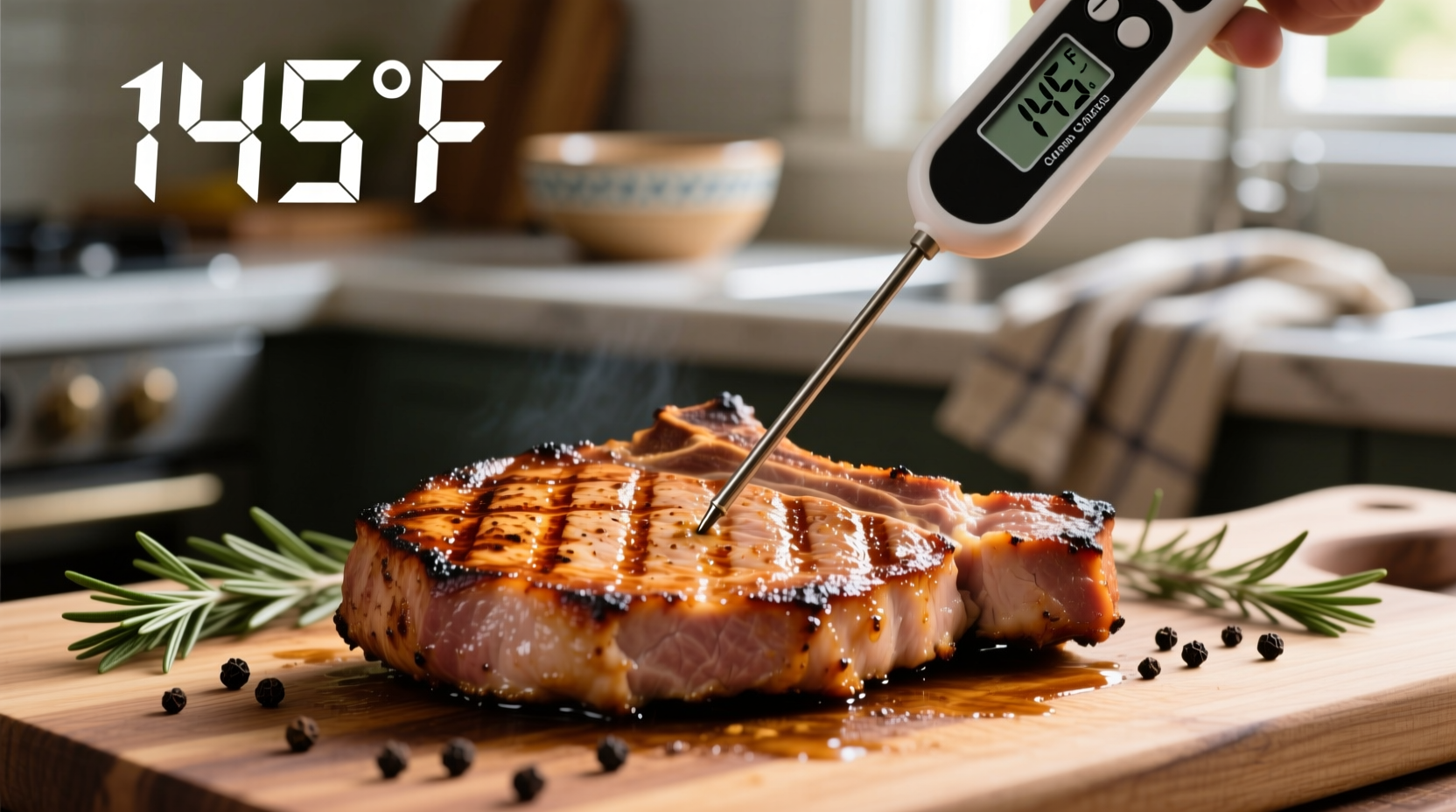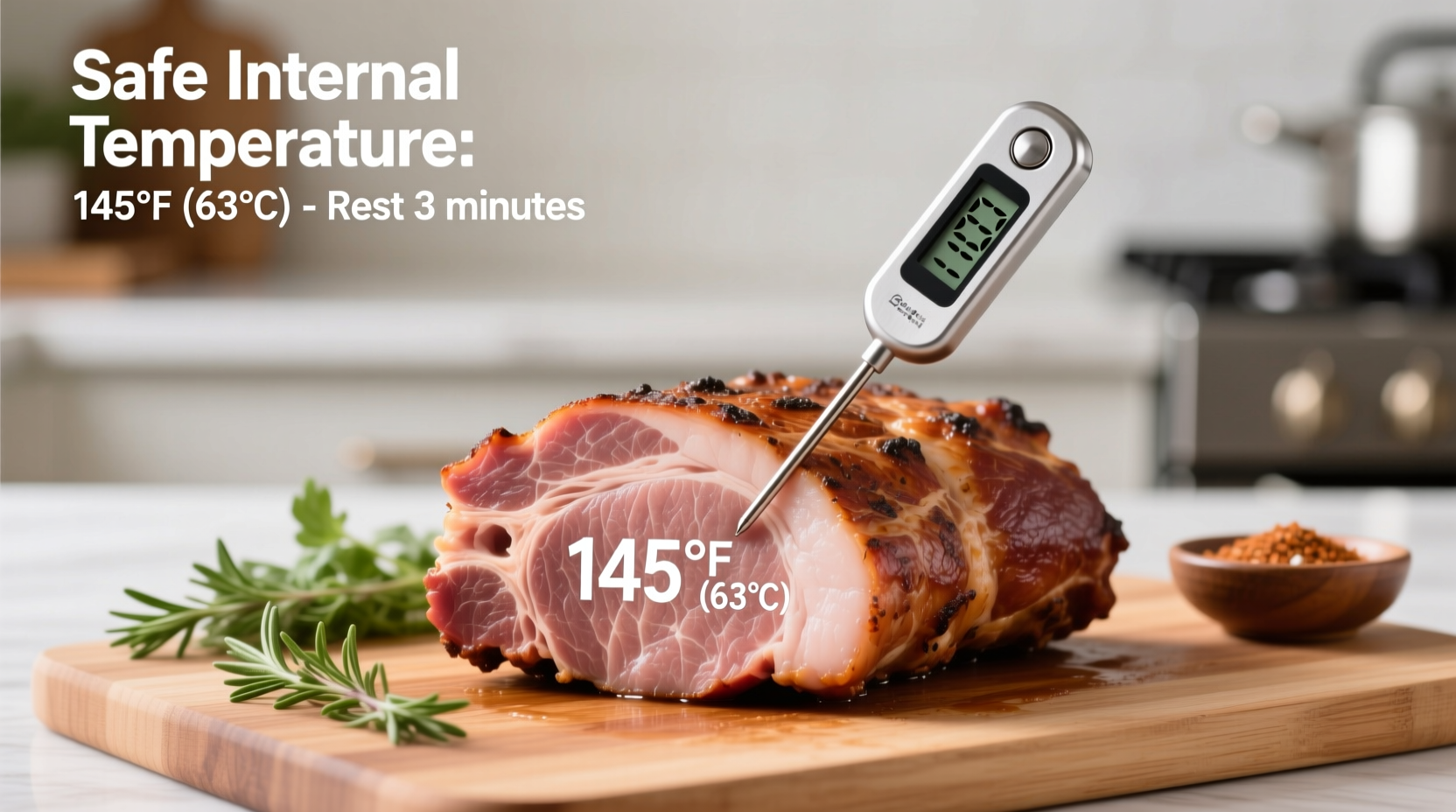Confused about pork cooking temperatures? You're not alone. Many home cooks still follow outdated advice that leads to dry, overcooked pork. Modern food safety science has evolved, and understanding the right temperature isn't just about safety—it's the secret to juicy, flavorful results every time.
Why Pork Temperature Matters More Than You Think
Getting the temperature right serves two critical purposes: eliminating harmful bacteria like Salmonella and Trichinella spiralis, while preserving the meat's natural moisture. The USDA updated its recommendations in 2011 after extensive research showed that 145°F with a rest period effectively kills pathogens while preventing the dryness that plagued previous generations of pork dishes.
| Pork Cut Type | Recommended Temperature | Rest Time | Visual Indicators |
|---|---|---|---|
| Pork chops, roasts, tenderloin (whole cuts) | 145°F (63°C) | 3 minutes | Slightly pink center, clear juices |
| Ground pork | 160°F (71°C) | None required | No pink color remaining |
| Pork shoulder (pulled pork) | 195-205°F (90-96°C) | 2 hours+ | Falls apart easily |
| Pre-cooked ham | 140°F (60°C) | None required | Heated through |
The Science Behind Modern Pork Cooking Guidelines
For decades, conventional wisdom dictated cooking pork to 160°F—a guideline established when trichinosis was more prevalent in commercial pork. Thanks to improved farming practices and feed regulations, the risk has dramatically decreased. The USDA's Food Safety and Inspection Service conducted comprehensive research showing that 145°F with a 3-minute rest achieves a 6.567 log10 reduction in Trichinella spiralis, well beyond the required safety threshold.
This evolution represents one of food safety's significant milestones. According to the USDA FSIS Pork from Farm to Table guide, the updated temperature standard maintains safety while dramatically improving eating quality. The rest period is crucial—during these three minutes, residual heat continues to rise slightly while muscle fibers relax, redistributing juices throughout the meat.
How to Measure Pork Temperature Correctly
Even with the right target temperature, improper measurement leads to cooking mistakes. Follow these professional techniques:
- Use a reliable instant-read thermometer—calibrate it regularly using ice water (32°F/0°C) or boiling water (212°F/100°C)
- Insert probe into the thickest part, avoiding bone, fat, or gristle which give false readings
- Check multiple spots in larger cuts to ensure even cooking
- Remove pork 5°F below target temperature—carryover cooking will raise the final temperature

Avoiding Common Pork Cooking Mistakes
Most dry pork results from these preventable errors:
- Guessing instead of measuring—even experienced cooks can't accurately judge doneness by appearance alone
- Skipping the rest period—cutting too soon releases precious juices onto the cutting board
- Overlooking carryover cooking—removing pork at exact target temperature often results in overcooking
- Misunderstanding cut differences—treating ground pork the same as whole cuts creates food safety risks
Professional chefs consistently emphasize that thermometer use separates good cooks from great ones. As noted in the FDA Food Code, temperature verification is the only reliable method for ensuring food safety in meat preparation.
Special Considerations for Different Cooking Methods
Whether you're grilling, roasting, or slow cooking, temperature requirements remain consistent, but technique adjustments are necessary:
- Grilling: Create two zones (direct and indirect heat). Sear over direct heat, then finish over indirect until reaching target temperature
- Sous vide: Cook at precisely 140°F for 1-4 hours depending on thickness, then sear briefly for crust development
- Slow cooking: While the appliance maintains safe temperatures, verify final internal temperature before serving
Remember that oven temperatures can vary significantly—use an oven thermometer to verify actual cooking environment temperature. The American Meat Science Association confirms that environmental temperature accuracy directly impacts final product safety and quality.
What If Your Pork Is Undercooked?
If you've removed pork from heat only to discover it's below safe temperature, don't panic. Return it to heat and continue cooking in 2-3 minute increments while checking temperature frequently. For larger cuts, tent with foil to prevent excessive surface drying. Never partially cook pork and finish later, as this creates the perfect environment for bacterial growth during the temperature danger zone (40°F-140°F).
Temperature Troubleshooting Guide
Encountering issues with your pork results? These solutions help:
- Dry, tough pork: Likely overcooked—remove 5°F before target temperature next time and ensure proper rest period
- Pink juices: Normal in properly cooked whole cuts—verify temperature rather than relying on juice color
- Uneven cooking: Rotate meat during cooking and check multiple temperature points
- Temperature stall: Common in larger cuts—be patient; the temperature will eventually rise again











 浙公网安备
33010002000092号
浙公网安备
33010002000092号 浙B2-20120091-4
浙B2-20120091-4